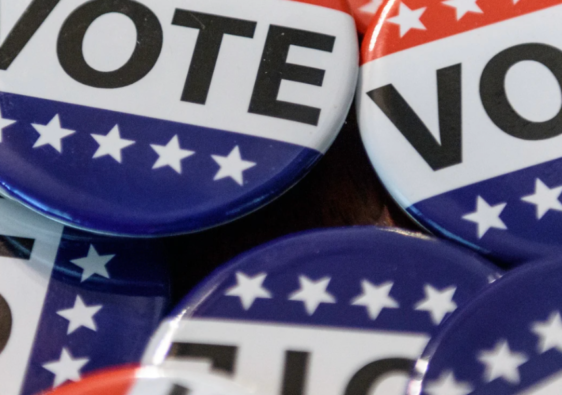“The story of the struggle for women’s suffrage in Utah is the story of all efforts for the advancement and betterment of humanity, and which has been told over and over ever since the advent of civilization.” — Sen. Martha Hughes Cannon, speaking in front of the U.S. House Judiciary Committee on Feb. 15, 1898.
The first woman elected to a state Senate in the United States may not have set out to make history when she won election in 1896, but she had already been a trailblazer for more than two decades by the time she was elected at age 39.
In recognition of her life and accomplishments, a bronze statue of Martha Hughes Cannon — once on display outside the historic Supreme Court chambers in Utah’s Capitol — will be permanently placed on Wednesday in Statuary Hall in Washington, D.C. The statue, created by Utah artist Ben Hammond, honors this remarkable woman who was a physician, the nation’s first female state senator, a health reformer, a suffragist, and a wife and a mother.
Martha “Mattie” Marie Hughes Cannon was born on July 1, 1857, in Llandudno, Wales, to parents Peter Hughes and Elizabeth Evans Hughes. Recent converts to The Church of Jesus Christ of Latter-day Saints, they left Wales to join the main body of saints in Utah. As a two-year old, she joined her parents, older sister Mary, age 5, and infant sister Anne on a schooner called the Underwriter and sailed for the United States. Too poor to continue the trek west when they arrived, and with a sickly father, Mattie’s mother took odd jobs to support the family until they could complete their journey the next year.
The Cannon family was allotted one-half of one wagon — dad and the girls rode in the wagon all the way to the Utah territory. Elizabeth walked the entire way. Mattie may well have learned grit and perseverance from her mother’s example. Their little family was not spared the tragedies of the trail — just days before their company entered the Salt Lake Valley, 1-year old Anne died. Three days after they entered the valley, Peter died. Elizabeth took her two remaining daughters to the acre-and-a-quarter on the valley’s east bench that had been allocated to them. She dug out part of the hillside to use for a kitchen, while she and her daughters slept in the rickety wagon that had brought them across the plains.
Elizabeth remarried about a year later — a widower and carpenter named James Patton Paul, who brought four children into the family, Together, they had five more children, putting Mattie in the middle of a large and rambunctious family. Mattie loved her stepfather and once away at medical school, used his last name as her own.
Even though most of her peers did not pursue education beyond high school, Mattie was determined to go to college, and as much as possible, needed to earn her way there. Her first job at age 14 was as a teacher in an “infant school”, but that was short-lived. She taught in a classroom where several of the boys were taller than her diminutive not-quite-five-feet stature and decided that was not for her.
She then became a typesetter for the Deseret News where she stayed up-to-date on current events of her time, before moving over to the Woman’s Exponent, the Relief Society publication that was decidedly political and pro-suffrage. While working at the Exponent, she listened to and learned from people like Emmeline B. Wells and Eliza R. Snow, and began writing her own commentary, articles and poetry.
After earning a degree in chemistry at the University of Deseret (now the University of Utah), Mattie was ready to head east for further training. At a time when early Latter-day Saint women were called to study medicine, Mattie was set apart by George Q. Cannon, her future brother-in-law. She headed east to the University of Michigan, which was one of the few schools at the time that offered co-ed medical education. She also thought Michigan was where she might receive a more rigorous education. Women like Ellis Shipp and Romania Pratt had previously been called by Church president Brigham Young to study medicine and had attended all-female schools. Still, the integration of men and women in a medical classroom was difficult for the University of Michigan. Women were often not allowed in the same classroom and had to learn their lessons by sitting outside the classroom or in an upper gallery. Anatomy classes were taught separately until 1908.
Graduation rates from the medical schools of the day were not high. Out of 312 men and 40 women, only 77 men and 14 women graduated. Mattie was one of the 14. With that degree completed, she went on to the University of Pennsylvania, where she became the first woman to graduate with a degree in pharmacy. She seemed fascinated by a new idea — that germs could cause disease. She also enhanced her speaking abilities by earning a degree in oratory from the National School of Elocution and Oratory, giving her four degrees by the time she turned 25.
When Dr. Hughes returned to Utah, she became the resident physician at Deseret Hospital which had been established by the Relief Society. In 1884, two years after the passage of the anti-polygamy Edmunds Act, she became the fourth wife of Angus Cannon, a man 23 years her senior. The next year, their first child — a daughter —was born. Mattie ended up with a warrant out for her arrest, which would have forced her to testify against not only her husband, but also against other men in polygamous marriages for whom she had delivered babies. In order to avoid testifying, she gave up her growing medical practice and moved to England, waiting out the two-year span of the warrant. When their second child was born in 1890, she left again, this time going to San Francisco for two years.
After returning to Utah, Hughes began using her oratorical abilities and spoke persuasively on restoring suffrage to women in Utah. Women had the right to vote in 1870, but it was taken away with the passage of the Edmunds-Tucker Act in 1877. Mattie was a featured speaker at the Women’s Congress of the World’s Columbian Exposition of 1893, prompting the Chicago Record to write: “Mrs. Dr. Martha Hughes Cannon. . .is considered one of the brightest exponents of woman’s cause in the United States.”
When the Utah constitutional convention approved including women’s suffrage in the new state constitution in 1895, Martha was the first woman in Salt Lake City to register to vote. The territorial court, however, ultimately determined that women could not vote in that pre-statehood election to ratify the constitution and elect the new state’s first legislature. The next year, the first in which women could again cast a ballot, Hughes ran on a slate of Democrats for a Senate seat. Her husband ran on a slate of Republicans, as did Emmeline B. Wells. All of the Democrats were elected, making Dr. Martha Hughes Cannon the first woman state Senator ever elected in the United States.
In that 1896 election, Sarah E. Anderson of Weber County and Eurithe LaBarthe of Salt Lake County were also elected state representatives, and eleven other women were elected to county offices: Amelia Graehl (Box Elder), Bessie Morehead (Cache), Tryphenia West (Iron), Lottie Farmer (Juab), Mamie Wooley (Kane), Delilah K. Olson (Millard), Mary F. Shelby (Rich), Margaret A. Caine (Salt Lake), Maude Layton (Sevier), Emily Dods (Tooele), and Ellen Jakeman (Utah).
In 1898, she testified in front of the U.S. House Judiciary Committee and gave a similar speech at the Seneca Falls 50th celebration. She told the listeners that “The story of the struggle for women’s suffrage in Utah is the story of all efforts for the advancement and betterment of humanity,” and that “the practical working of the law demonstrates its wisdom and verifies the claims which were advanced by its ardent advocates. It has proved to the world that woman is not only a help meet by the fireside, but she can, when allowed to do so, become a most powerful and most potent factor in the affairs of the government.”
Mattie introduced three bills in her first legislative session: A bill mandating the education of “deaf, dumb, and blind children,” an act creating a state board of health and defining its duties and an act to protect the health and safety of female employees. Her influence in Utah continues to be felt today, and while her legacy was largely forgotten for a number of years (her own granddaughter did not know she had been a state senator until she read her grandmother’s obituary), this week, her statue will take its place in Emancipation Hall in the U.S. Capitol.
Originally published by Deseret News



